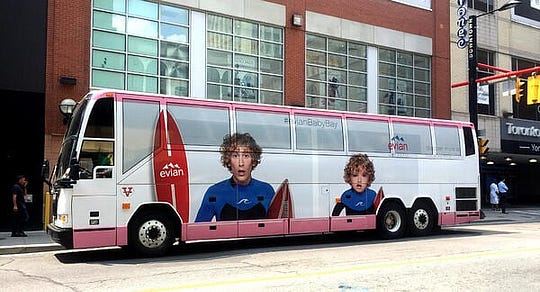Bus Wrap Advertising: Why It Is Difficult To Measure Performance?
In the world of advertising, businesses are constantly seeking innovative ways to capture their target audience’s attention. One such method that has gained popularity in recent years is bus wrap advertising. This concept involves transforming public buses into moving billboards by wrapping them in eye-catching advertisements. While this form of advertising may seem like a great way to reach a broader audience, it comes with its own set of challenges when it comes to measuring performance. In this blog, we will explore the concept of bus wrap advertising, its advantages, and the difficulties in accurately measuring its performance.
Bus Wrap Advertising: The Concept

Bus wrap advertising, also known as bus wrap marketing or bus wrap media, is a form of out-of-home advertising where the exteriors of buses are covered with large, vibrant graphics, brand logos, and promotional messages. These wraps essentially turn buses into mobile billboards that roam the streets, reaching a diverse audience as they travel on their regular routes.
The concept behind bus wrap advertising is to leverage the widespread visibility of public transportation to increase brand exposure. Buses are ubiquitous in urban and suburban areas, making them an attractive canvas for advertisers to display their messages. By utilizing large, attention-grabbing visuals, businesses hope to leave a lasting impression on passersby, pedestrians, and drivers, thus raising brand awareness and potentially driving consumer actions.
Disadvantages of Bus Advertising
While bus wrap advertising offers several benefits, including increased brand visibility and reaching a broad audience, it also presents unique challenges that make measuring its performance difficult. Some of the major disadvantages of bus advertising include:
- Limited Targeting Opportunities
Unlike digital advertising channels, which allow for precise targeting based on demographics, interests, and behaviors, bus wrap advertising lacks the ability to target specific audiences. Buses follow predetermined routes, making it challenging to deliver ads to niche markets or specific geographic locations. As a result, advertisers may find it difficult to gauge the effectiveness of their campaigns in reaching the desired audience.
2. Lack of Real-Time Analytics
Digital advertising platforms often provide real-time analytics, allowing advertisers to track the performance of their campaigns immediately. With bus wrap advertising, measuring performance relies on manual data collection methods, such as surveys or observational studies. This lack of real-time data makes it hard for businesses to make quick adjustments to their campaigns or assess the immediate impact of their ads.
3. Difficulty in Attribution
Determining the direct impact of bus wrap advertising on consumer actions, such as website visits, purchases, or brand engagement, can be challenging. In a multi-channel advertising landscape, it becomes tricky to attribute specific outcomes solely to bus wrap ads. Consumers may come across the bus ad but later interact with the brand through other channels, making it difficult to pinpoint the exact contribution of bus wrap advertising to the overall marketing efforts.
4. External Factors
Bus wrapping advertising is subject to external factors, such as weather conditions and traffic patterns, which can influence ad visibility and exposure. For example, a bus wrap ad stuck in heavy traffic may not receive as much attention as expected. These uncontrollable factors can affect the reliability of performance measurements.
5. Audience Engagement Metrics
Unlike digital advertising, which can track various engagement metrics, such as click-through rates and conversions, bus wrap advertising lacks direct interaction with the audience. Therefore, measuring metrics related to audience engagement becomes a challenge, and businesses may need to rely on proxy metrics or indirect indicators.
Conclusion
Bus wrap advertising is undoubtedly an eye-catching and creative form of outdoor advertising that can potentially offer high brand exposure. However, its inherent limitations, such as the lack of precise targeting, real-time analytics, and attribution challenges, make measuring its performance difficult. Businesses that choose to invest in bus wrap advertising should consider these factors and adopt complementary strategies, such as using trackable QR codes or offering unique promotions tied to the campaign, to better gauge its impact on their overall marketing efforts. As the advertising landscape continues to evolve, it will be essential for advertisers to find innovative ways to overcome these challenges and ensure their bus wrap campaigns are as effective as possible.
